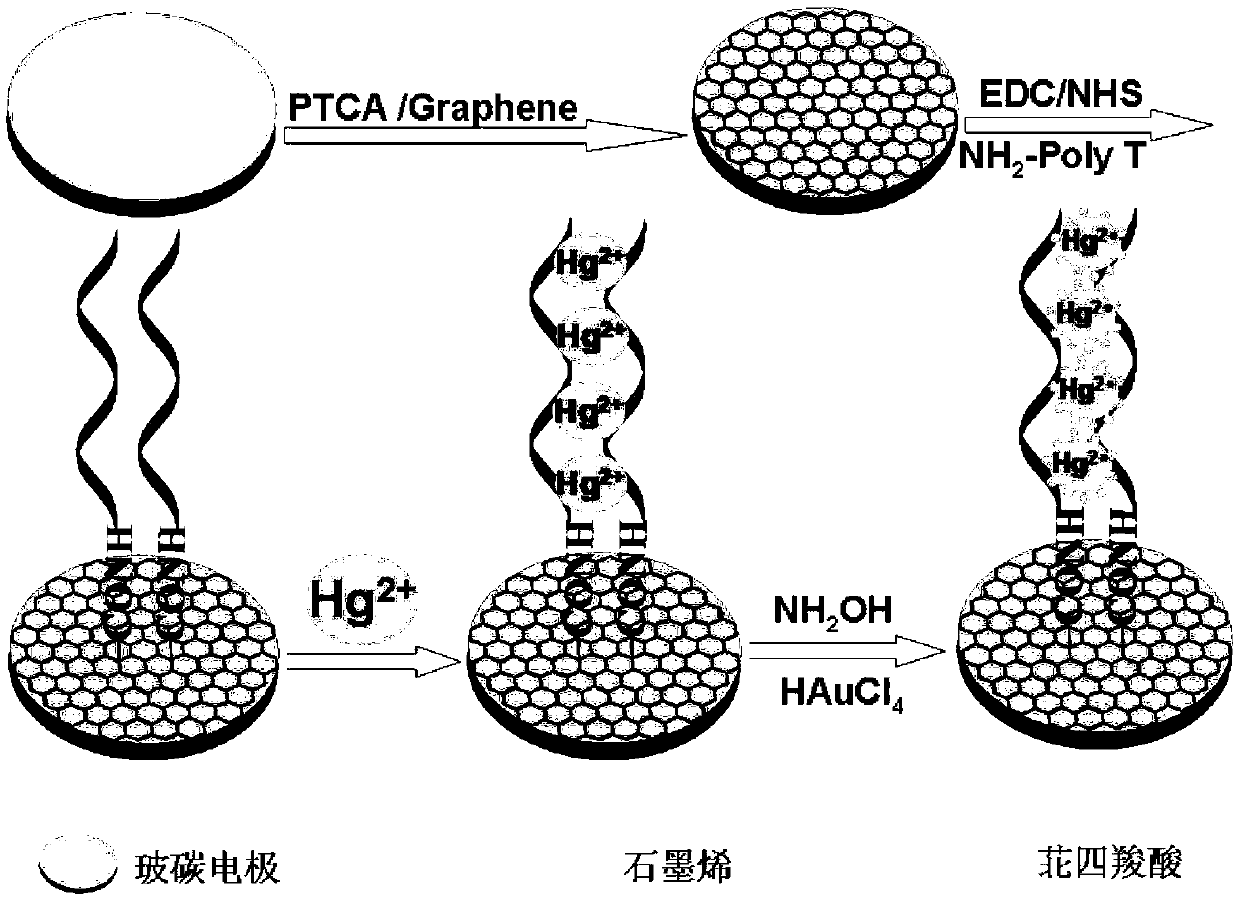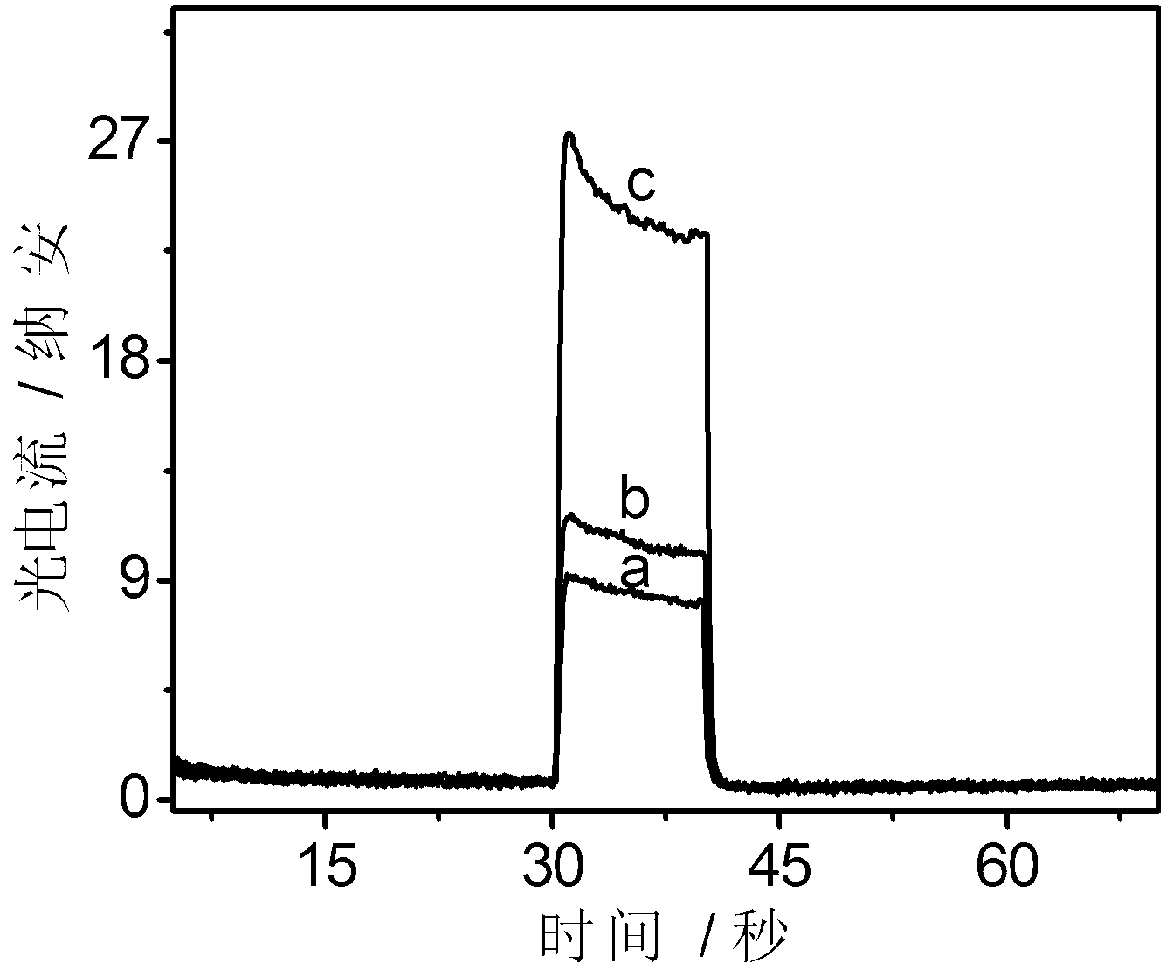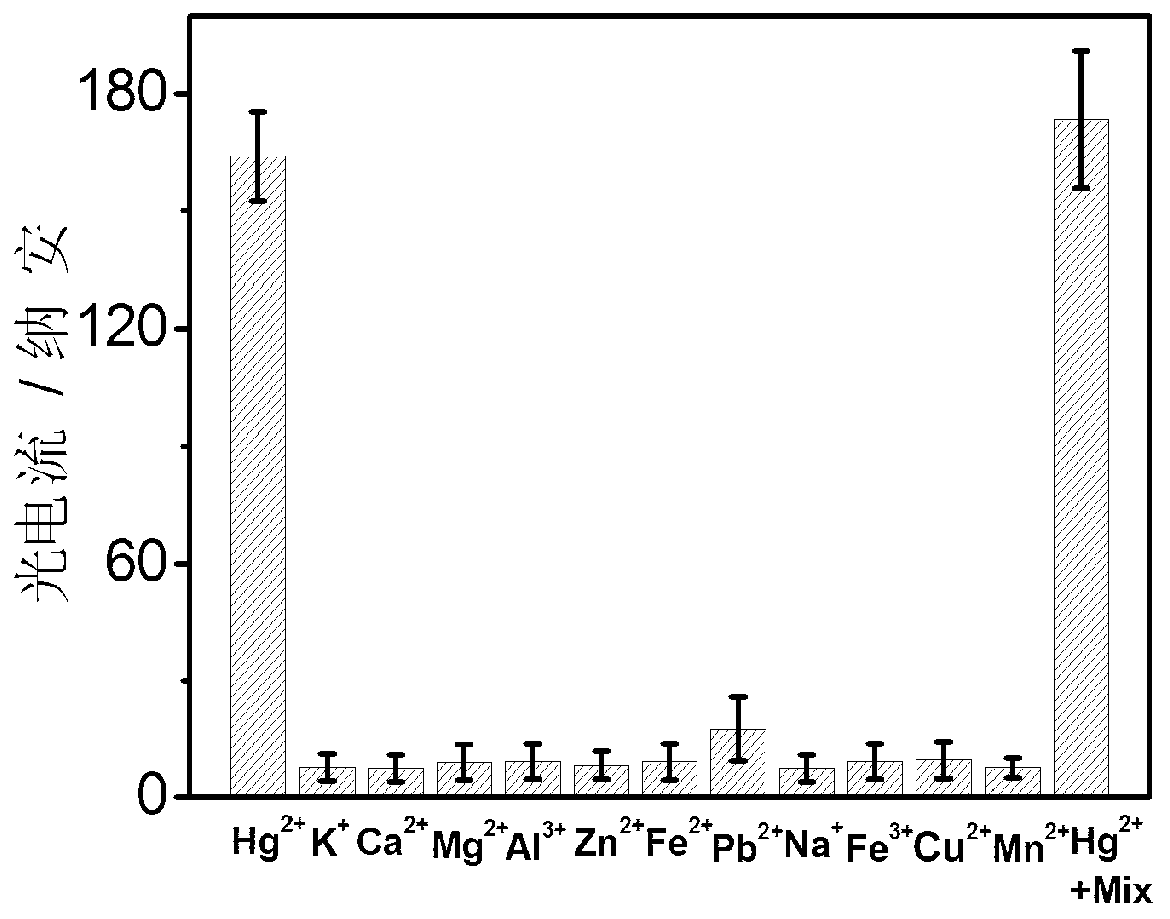Method for constructing photoelectric chemical sensor for mercury ion detection
A technology of photoelectrochemistry and construction method, which is applied in the field of photoelectrochemical sensor preparation, can solve problems affecting photoelectrochemical detection sensitivity, etc., and achieve the effects of improving comprehensive analysis performance, increasing photocurrent value, and inhibiting recombination
- Summary
- Abstract
- Description
- Claims
- Application Information
AI Technical Summary
Problems solved by technology
Method used
Image
Examples
Embodiment 1
[0026] Embodiment 1: The construction method of the photoelectrochemical sensor that is used for mercury ion detection, such as figure 1 shown, including the following steps:
[0027] (1) After the glassy carbon electrode is polished with a suspension of aluminum oxide with a particle size of 0.3 μm, it is cleaned with ethanol and pure water in turn, and then placed at room temperature to dry. 10 μL of perylene tetracarboxylic acid / graphene heterojunction suspension was drop-coated on the surface of the glassy carbon electrode and dried at room temperature to obtain a perylene tetracarboxylic acid / graphene heterojunction modified electrode.
[0028] The specific scheme for preparing perylenetetracarboxylic acid / graphene heterojunction is as follows: First, prepare 1×10 -4 mol L -1 DMF solution of perylenetetracarboxylic acid and 1 x 10 -2 mg mL -1 Graphene suspension, then take 10 mL of perylene tetracarboxylic acid solution and 2 mL of graphene suspension, mix and soni...
Embodiment 2
[0042] Embodiment 2: The construction method of the photoelectrochemical sensor that is used for mercury ion detection:
[0043] The specific scheme for preparing perylenetetracarboxylic acid / graphene heterojunction is as follows: First, prepare 0.5×10 -4 mol L -1 DMF solution of perylenetetracarboxylic acid and 0.5 x 10 -2 mg mL -1 Graphene suspension, then take 10 mL of perylene tetracarboxylic acid solution and 2 mL of graphene suspension, mix and sonicate at room temperature for 2 hours, then stir for another 2 hours and let stand overnight to generate perylene tetracarboxylic acid / graphene Heterojunction.
[0044] After the glassy carbon electrode was polished with a suspension of aluminum oxide with a particle size of 0.3 μm, it was cleaned with ethanol and pure water in turn, and then left to dry at room temperature. 10 μL of perylene tetracarboxylic acid / graphene heterojunction suspension was drop-coated on the surface of the glassy carbon electrode and dried at ...
Embodiment 3
[0046] Embodiment 3: The construction method of the photoelectrochemical sensor that is used for mercury ion detection:
[0047] The specific scheme for preparing perylenetetracarboxylic acid / graphene heterojunction is as follows: First, prepare 2×10 -4 mol L -1 DMF solution of perylenetetracarboxylic acid and 2 x 10 -2 mg mL -1 Graphene suspension, then take 10 mL of perylene tetracarboxylic acid solution and 2 mL of graphene suspension, mix and sonicate at room temperature for 1 hour, then stir for 1 hour and let stand overnight to generate perylene tetracarboxylic acid / graphene Heterojunction.
[0048] After the glassy carbon electrode was polished with a suspension of aluminum oxide with a particle size of 0.3 μm, it was cleaned with ethanol and pure water in turn, and then left to dry at room temperature. 10 μL of perylene tetracarboxylic acid / graphene heterojunction suspension was drop-coated on the surface of the glassy carbon electrode and dried at room temperatu...
PUM
 Login to View More
Login to View More Abstract
Description
Claims
Application Information
 Login to View More
Login to View More - R&D
- Intellectual Property
- Life Sciences
- Materials
- Tech Scout
- Unparalleled Data Quality
- Higher Quality Content
- 60% Fewer Hallucinations
Browse by: Latest US Patents, China's latest patents, Technical Efficacy Thesaurus, Application Domain, Technology Topic, Popular Technical Reports.
© 2025 PatSnap. All rights reserved.Legal|Privacy policy|Modern Slavery Act Transparency Statement|Sitemap|About US| Contact US: help@patsnap.com



